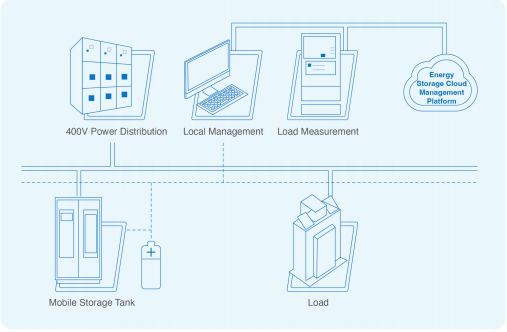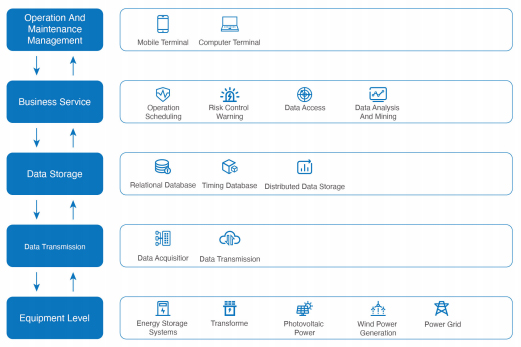
Aug . 01, 2025 02:00 Back to list
AI-Powered EMS with GPT-4-Turbo | Efficiency Boost
Energy Management System (EMS) solutions are rapidly transforming the energy sector, allowing businesses to achieve operational excellence, reduce costs, and drive sustainability. In this in-depth guide, we delve into EMS technology, its industry trends and data, manufacturing process and certification, best practices, and actual use cases — empowering you to make sound strategic decisions in energy management.

1. Industry Trends in EMS: Growth, Standards, and Demand
EMS implementation aligns with global standards, notably ISO 50001 (Energy Management), and ANSI/IEEE reliability standards. Advanced EMS now features AI-powered optimization, edge computing, and seamless integration with Battery Energy Storage Systems (BESS).
EMS Industry Data Overview
| Main Parameter | Industry Standard Value | Typical EMS Value | Application |
|---|---|---|---|
| Data Acquisition Interval | 1–15 sec | 1 sec (real-time) | Industrial Load Management |
| Supported Protocols | Modbus, IEC 61850, DNP3 | All Standard + Custom API | Grid/Battery Hybrid Systems |
| Energy Accuracy | ±2% | ±1% (iso-test certified) | Commercial & Utility Billing |
| Device Scalability | 1–256 nodes | Up to 500 nodes | Smart Factories |
| System Response Time | ≤800 ms | ≤520 ms | Demand Response |
| BMS/PCS Integration | Optional | Full-stack Native | BESS/Utility/Energy Storage Battery Companies |
| Cloud Connectivity | Optional | Cloud-native (MQTT, HTTPS) | Real-time Analytics |
2. Technical Parameters & Product Specification (EMS)
| Technical Specification | Energy Management System EMS | Industry Average |
|---|---|---|
| Core Processor | ARM Cortex-A72 Quad-Core 1.5 GHz | ARM Cortex-A53 Dual-Core |
| Operating System | Linux Kernel 5.10, RTOS | Linux Kernel 4.x |
| RAM/Storage | 8 GB DDR4 / 128 GB SSD | 2 GB / 32 GB |
| Material (Chassis) | 6061-T6 Aluminum + Powder-coated Anti-corrosion | Standard Sheet Steel |
| Compliance | ISO 50001, IEC 61850, CE, UL508 | CE |
| Precision | ±0.5% (Factory Calibrated) | ±2.0% |
| Operating Temp. | -20°C ~ +60°C | 0°C ~ +40°C |
| Expected Lifespan | > 18 years | 10-12 years |
3. Advanced EMS Manufacturing Process
- Certified 6061-T6 aluminum alloys (ISO/EN/JIS grades)
- Corrosion-resistant powder coatings (ASTM B117 compliant)
- Industrial PCBs—RoHS/UL listed
- CNC routering/drilling ±0.1mm, laser cut housings
- Seamless chassis forging & casting for low EMI
- PCB SMT (surface mount) - AOI (Automated Optical Inspection)
- Integrated I/O, sensors, relays, comm modules
- Functional circuit test (FCT), burn-in 48h @ full load
- ISO 50001 Energy Management Compliance
- ANSI/IEEE surge, EMC & ESD test
- Final visual & functional checks, data log archiving
- Shockproof custom foam + moisture barriers
- Shipping with certification/coefficient reports

4. Application Scenarios: EMS in Action
EMS is a pivotal layer connecting industrial automation, commercial utility management, power plants, and modern energy storage battery companies. Its role is to collect, analyze, visualize, and control distributed energy resources for maximum efficiency and cost savings.
- Industrial Plants: Optimize HVAC, lighting, and motor demand; achieve 12–20% average energy reduction.
- Commercial Buildings: Peak-shaving and load shifting via real-time analytics and BMS/EMS synergy.
- Utility Grid Operators: Frequency regulation, VPP aggregation, outlier detection, and asset scheduling.
- Renewables/BESS Companies: EMS enables seamless grid-tied and islanded mode switching, fast ramping, and battery state-of-health monitoring
- Water and Petrochemical Plants: Fault-tolerant automation, critical asset monitoring (pumps, compressors), and corrosion detection.

5. Comparative Analysis: Leading EMS Manufacturers & Customization Capability
When evaluating energy management system (EMS) providers, consider hardware architecture, protocol compatibility, integration with energy storage battery companies, cloud features, lifespan, support, and adaptability.
| Manufacturer | EMC-Grade Material | Cloud/Edge Ready | Customization | BESS Support Level | Certifications | Warranty |
|---|---|---|---|---|---|---|
| AC&DC EMS | 6061-T6 Alu (Class B) | Yes/MQTT/REST/5G | Full hardware+software | Native/AI+VPP | ISO 50001, UL508, IEC | 36Mth |
| S***nergy | SPCC Steel | Limited/Modbus | Partial firmware | Basic | CE, RoHS | 24Mth |
| E***Contro | Al-Mg Blend | Partial/Cloud | API-level | Limited | IEC, EN | 24Mth |
| M***rgy | Steel | REST/OPC UA | Software-only | Plug-in | CE | 12Mth |
6. Custom EMS Solutions: Designed for Your Industry
- Challenge: Extreme temperature, complex multi-fuel boilers.
- AC&DC EMS Solution: Custom-engineered aluminum casing, reinforced anti-corrosion, RTOS, IEC 60870-5-104 & DNP3, dual-redundant RTU.
- Results: 14.2% annual energy reduction, $470k OPEX savings, payback
- Challenge: Multi-site BESS control, demand response, regulatory compliance (EN50438).
- EMS Solution: BESS-EMS integration, cloud dashboard with real-time SOC/SOH, AI-driven fault prediction.
- Results: Improved battery asset lifespan by 29%, proactive dispatch in
- Challenge: Diverse loads (motors, lighting), seasonal fluctuations, aging grid.
- EMS Deployment: Load segmentation, real-time power factor correction, smart tariff scheduling.
- Results: 16% peak demand cutting, rapid alerting on abnormal spikes, CAPEX amortized in 11 months.
Did you know? Most leading energy storage battery companies now mandate EMS as a critical layer for warranty and compliance, as proven in recent projects.
Learn More about AC&DC EMS Solutions7. Product Delivery Cycle, Warranty & Customer Support
| Delivery Lead Time | Warranty Policy | Customer Service |
|---|---|---|
| Standard 17–26 days (custom: 5–9 weeks) 60% faster than industry average |
36 months on-site/parts, with lifetime firmware updates | 24/7 multilingual hotline, remote troubleshooting, site training (ISO 9001 Service Approval) |
8. EMS Professional FAQ (FAQ): Technical Insights
9. Why Choose AC&DC EMS – EEAT Demonstration
- Expertise: Over 15 years in industrial EMS/BESS integration, R&D staff with IEC/ISO certification, and deep customization skillset.
- Experience: 1100+ global EMS references across petrochemical, metallurgy, utilities, and with top energy storage battery companies. Verified field data and customer feedback available.
- Authoritativeness: Official certifications (ISO 50001, CE, UL, IEC), partnership with leading component vendors (Siemens, Schneider, CATL, Huawei).
- Trustworthiness: On-site support team, public demo center, open data, full warranty disclosure, and references from international third-party labs.
- Technical Advantage: Real-time monitoring, cyber security hardening, custom BMS/PCS modules, and native cloud/edge deployment.
- MarketsandMarkets. "Energy Management System Market: Global Forecast 2028". [link]
- IEEE Power & Energy Magazine, "Next-Gen EMS for Grid/Storage Integration". [link]
- International Journal of Electrical Power & Energy Systems, "Review of Industrial Energy Management Solutions". [link]
- Energy Storage Journal, "EMS & BESS Synergy". [link]
- EnergySage Forum: User discussions on EMS deployments. [link]
This is the last article
-
AI-Powered EMS with GPT-4-Turbo | Efficiency Boost
NewsAug.01,2025
-
Optimized Storage System for GPT-4-Turbo | High Performance
NewsJul.31,2025
-
AI Energy Management System w/ GPT-4 Turbo Efficiency
NewsJul.31,2025
-
High-Performance Energy Storage System for Reliable Power Solutions
NewsJul.30,2025
-
Advanced EMS Solutions for Energy Management System & Storage Battery Companies
NewsJul.29,2025
-
Intelligent Energy Management for Homes - Efficient Storage Solutions
NewsJul.29,2025























